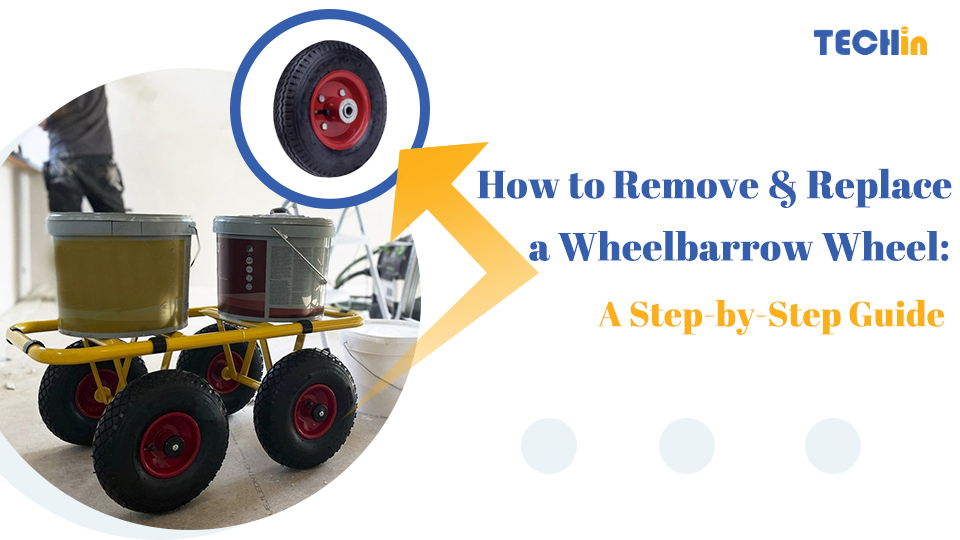Introduction
It’s important to keep your office chair wheels clean to maintain smooth mobility and extend the life of your chair. Over time, dirt, hair, and debris can build up in the wheels, causing them to jam or not work properly. In this guide, we’ll walk you through the step-by-step process to clean your office chair wheels effectively and keep them rolling smoothly.
How to clean office chair wheels?
To clean your office chair wheels, you’ll need a scrub brush, tweezers, a butter knife, and a soapy water solution. If you can, take the wheels off the chair base and soak them in soapy water to loosen dirt and grime. Use a brush to scrub each wheel, paying special attention to tight spots and axles. Use tweezers to remove any hair or debris, then rinse and dry the wheels before putting them back on. You can also apply a lubricant to the wheels for added smoothness. Clean your wheels regularly to prevent dirt buildup and keep your chair moving well.
Now, let’s go through each step in more detail to make sure your office chair wheels stay clean and working great for years to come.
1. Gather Necessary Supplies
Before beginning the cleaning process, make sure you have all the necessary tools on hand. Proper preparation will make the process smoother and more efficient. Here’s what you’ll need:
- Scrub Brush: A stiff-bristled brush is ideal for scrubbing the surface of the wheels and removing stuck-on dirt. Choose a brush that’s small enough to get into the crevices but strong enough to handle stubborn grime.
- Tweezers or Pliers: These are essential for pulling out hair, threads, or other debris wrapped around the wheel axles. Tweezers provide precision, while pliers offer more grip for tougher materials.
- Butter Knife or Flat-head Screwdriver: These tools help in scraping off hardened dirt or grime from the wheels without damaging them. Opt for a tool with a thin edge to get into tight spaces.
- Soapy Water Solution: A mild dish soap mixed with warm water works well to loosen grime and dirt. Ensure the soap is gentle to avoid damaging the wheel material.
- Rags: Have a few clean rags ready for wiping down the wheels and drying them after cleaning. Microfiber cloths are recommended as they are absorbent and less likely to leave lint behind.
- Vacuum with Brush Attachment: Useful for removing loose dirt and dust before you start scrubbing. A vacuum with a brush attachment can also help to dislodge dirt from tight spots.
- Lubricant (Optional): A silicone-based lubricant can reduce friction and help the wheels roll more smoothly. Avoid oil-based lubricants as they can attract more dirt and dust.
2. Remove Wheels (if possible)
Removing the wheels from the chair base allows for a more thorough cleaning. Not all office chairs have removable wheels, but if yours does, follow these steps:
- Check the Wheel Attachment: Most office chair wheels are attached via a stem that pops into the chair base. To remove them, simply pull the wheels straight out from the base. If they don’t budge, you may need to use a flat-head screwdriver to gently pry them off. Be cautious not to force them too hard, as this could damage the attachment point.
- Soak the Wheels: Once removed, soak the wheels in a bucket of soapy water. Allow them to sit for at least 10-15 minutes. This soaking time will help to loosen any hardened dirt and grime, making it easier to scrub away. If the wheels are especially dirty, you can soak them for longer or use a more concentrated soap solution.
3. Scrub Wheels
After soaking, it’s time to get scrubbing. This step is crucial for removing the buildup of dirt and debris that accumulates over time.
- Use a Scrub Brush: Start with the larger scrub brush to clean the outside surface of each wheel. Apply firm pressure to remove dirt, but be careful not to damage the wheels, especially if they are made of plastic. For wheels with intricate designs or grooves, a smaller brush might be more effective.
- Detail Cleaning with a Toothbrush: For tighter spots, such as between the wheel and axle, use a toothbrush or cotton swabs. This allows you to reach small crevices where dirt and hair can hide. You might need to scrub several times to completely remove all the dirt.
- Removing Hair and Threads: Hair and threads often wrap around the wheel axles and can be difficult to remove. Use tweezers or a crochet hook to carefully pull out these obstructions. In some cases, you may need to cut through the hair or threads with scissors before pulling them out. Be patient and gentle to avoid damaging the axle.
4. Clean Wheel Attachments
While your wheels are soaking or drying, don’t forget to clean the areas where the wheels attach to the chair base.
- Wipe Down the Chair Base: Use a damp rag to wipe down the areas where the wheels connect to the chair base. This removes dust and debris that could interfere with the reattachment of the wheels. Pay close attention to any small crevices where dirt might have accumulated.
- Scrape Off Stuck Debris: If there is any hardened dirt or residue around the attachments, use a butter knife or flat-head screwdriver to gently scrape it off. Be careful not to gouge the plastic or metal parts, as this could affect how well the wheels spin once reattached. A gentle touch will help preserve the integrity of the chair base.
5. Rinse and Dry
Proper rinsing and drying are key to preventing damage to your chair.
- Rinse with Clean Water: After scrubbing, rinse each wheel thoroughly with clean water to remove any remaining soap and loosened dirt. Hold the wheels under running water or use a separate bucket of clean water for rinsing.
- Dry Completely: Use a dry rag to wipe down the wheels immediately after rinsing. Make sure the wheels are completely dry before reattaching them. Moisture can lead to rust, mold, or other damage, so ensure they are fully dry. You can air dry them or use a hairdryer on a cool setting to speed up the process.
6. Lubricate
For even smoother rolling, consider lubricating the wheels after cleaning.
- Apply a Lubricant: A silicone-based lubricant is recommended for office chair wheels. Spray a small amount inside the wheel where it attaches to the axle. This reduces friction and can extend the life of your wheels. Apply the lubricant sparingly to avoid creating a sticky surface that could attract more dirt.
- Wipe Off Excess: After applying the lubricant, wipe off any excess with a rag. This prevents dirt from sticking to the wheels in the future. Regular lubrication, when done correctly, can make a significant difference in how your chair rolls.
7. Reassemble Chair
Once everything is clean, dry, and lubricated (if you chose to do so), it’s time to reassemble your chair.
- Reattach the Wheels: Push each wheel back into place on the chair base. Ensure they are securely attached by giving them a gentle tug. The wheels should click into place if they are properly secured.
- Check for Smooth Operation: Once the wheels are reattached, test the chair by rolling it across the floor. The wheels should spin freely and the chair should glide smoothly. If not, double-check that all debris has been removed and that the wheels are properly attached. If any issues persist, it might be necessary to repeat the cleaning or lubrication process.
FAQs
How Often Should I Clean My Office Chair Wheels?
For optimal performance, it’s recommended to clean your office chair wheels every three to six months, depending on how often the chair is used and the environment it’s in. In high-traffic areas or for chairs that are heavily used, more frequent cleaning may be necessary. Regular maintenance will not only keep your chair rolling smoothly but also extend its lifespan.
Can I Use a Pressure Washer to Clean Office Chair Wheels?
While a pressure washer can effectively remove dirt, it’s not recommended for cleaning office chair wheels. The high-pressure water can damage the wheels, especially if they are made of plastic, and may force water into areas that could cause rust or other issues. Stick to hand-cleaning with brushes and soapy water for the best results.
What Are Some Common Mistakes to Avoid When Cleaning Office Chair Wheels?
- Using Excessive Force: Be gentle when scraping off debris. Using too much force can damage the wheels or the chair base. It’s better to soak the wheels longer than to forcefully scrape off stubborn dirt.
- Skipping the Drying Process: Always make sure the wheels are completely dry before reattaching them. Moisture can lead to rust, mold, or other damage.
- Over-Lubricating: While lubricating can be beneficial, applying too much can attract more dirt and dust, defeating the purpose of cleaning. Apply sparingly and always wipe off the excess.
Summary
Regularly cleaning your office chair wheels will not only extend the life of your chair but also ensure smooth and effortless movement. By following these detailed steps and avoiding common mistakes, you can maintain your office chair in top condition, contributing to a cleaner and more efficient workspace.








